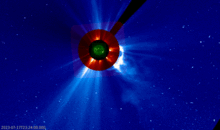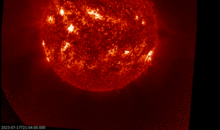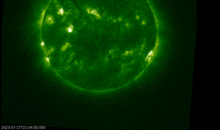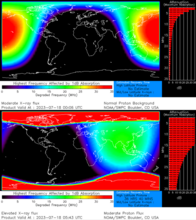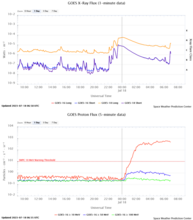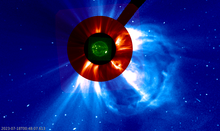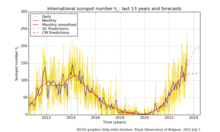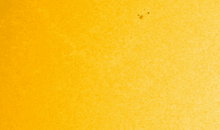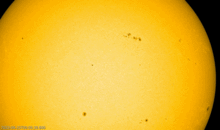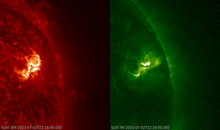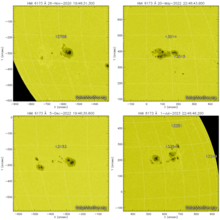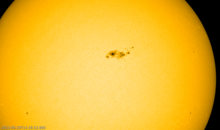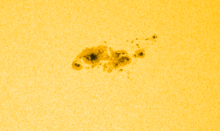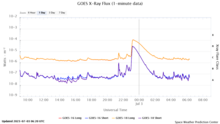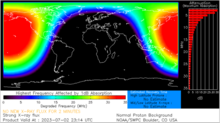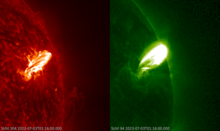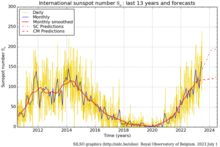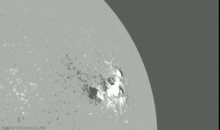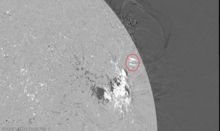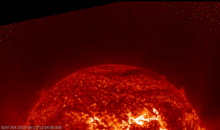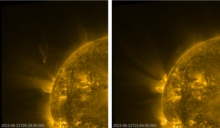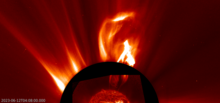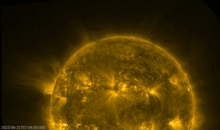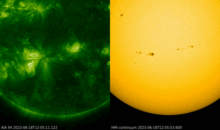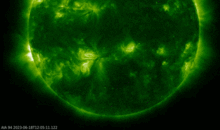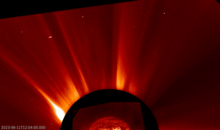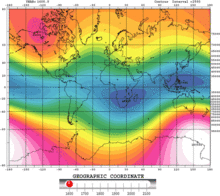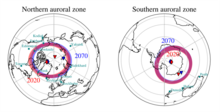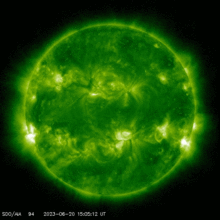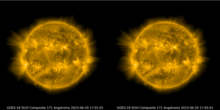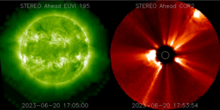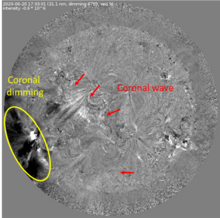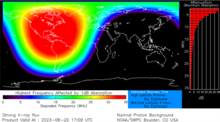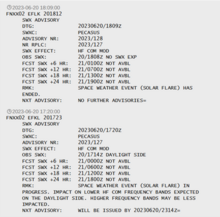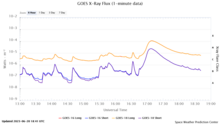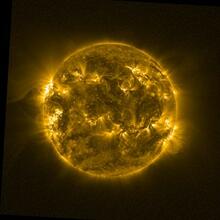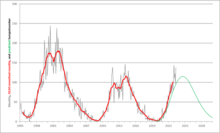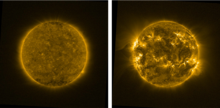news
Submitted on 2023-07-18
An M5.7 flare produced by NOAA 3363 drove the greater than 10 MeV proton flux to its highest levels so far this solar cycle, affecting HF communications over respectively the Earth's dayside (Pacific Ocean) and poles.
Submitted on 2023-07-12
Mark your calendars for the weekend of 9 and 10 September 2023!
Join us at the Radio Astronomy Station of Humain, in Wallonia, to celebrate Belgium’s rich and diverse heritage. This station was founded in 1953 by the Royal Observatory of Belgium to house the very first Belgian radio telescopes dedicated to observing the Sun.
Submitted on 2023-07-06
An overview and movie of some spectacular solar and space weather events in 2022 is available at the STCE's solar cycle highlights webpage.
Submitted on 2023-07-06
It has been from 2002 since so many sunspots have been seen on the sun in a single month. It shows that the sun is becoming more active and the "storm season" on the sun is in full swing. It raises the concern on a very severe solar storm. Should we be worried? We got this question from a journalist.
Submitted on 2023-07-03
One of the largest sunspot regions of the current solar cycle developed last week, producing an X-class flare late on 2 July. The monthly sunspot number for June 2023 is the highest so far this solar cycle.
Submitted on 2023-06-27
Over the last few weeks, some nice solar eruptions have been visible in the extreme ultraviolet passbands.
Submitted on 2023-06-21
The persistent movement of the North magnetic pole towards Siberia may have some consequences on local space weather impacts such as aurora visibility and geomagnetically induced currents.
Submitted on 2023-06-20
After a drought of nearly 3 months, the Sun unleashed an X-class flare on 20 June.
Submitted on 2023-06-19
Due to a reshuffling of responsibilities, SILSO will from now on run under the single Directorship of Laure Lefèvre, and therefore any future questions related to the SILSO management or data should be addressed to Laure.Lefevre@oma.be. We take this opportunity to thank both Frédéric Clette and Laure Lefèvre for their dedication to the SILSO operations during many years.
Submitted on 2023-06-06
The STCE's SC25 Tracking page has been updated. Solar activity continues its march towards solar cycle maximum which is currently expected in 2024.
Pages
Zircon - This is a contributing Drupal Theme
Design by
WeebPal.

